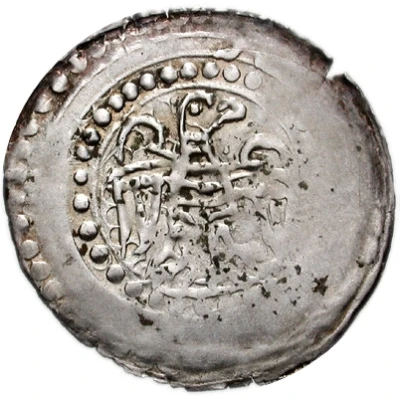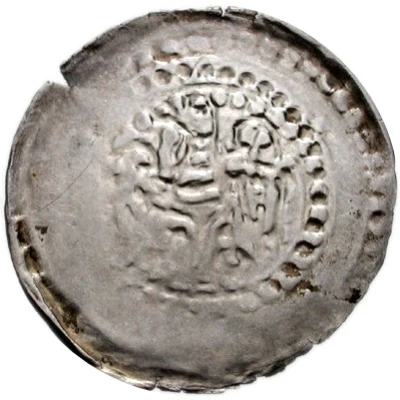


© Classical Numismatic Group, Inc.
Obol Bracteate - Henry V of Brunswick ND
| Silver | 0.73 g | 23 mm |
| Issuer | Counts palatine of the Rhine (Palatinate, German States) |
|---|---|
| Count palatine | Henry V of Brunswick (Heinrich der Ältere von Braunschweig) (1195-1212) |
| Type | Standard circulation coin |
| Years | 1195-1210 |
| Value | 1 Obol (½) |
| Currency | Pfennig |
| Composition | Silver |
| Weight | 0.73 g |
| Diameter | 23 mm |
| Shape | Round (irregular) |
| Technique | Hammered (bracteate) |
| Demonetized | Yes |
| Updated | 2024-10-05 |
| Numista | N#109337 |
|---|---|
| Rarity index | 97% |
Reverse
Heraldic lion left within double circle of pellets.
Comment
Comment form the Catalogue for Memmesheimer collection:"The attribution of the last two semi-bractates is different. While Dr. Gaettens performed both pieces in Hohenstaufen II under Konrad von Hohenstaufen, Buchenau explains in MBNG 1928, p. 7-32 that the coinage attributed by Paul Joseph to the Hohenstaufen only took place under his son-in-law, the Braunschweiger. In the exhibition catalog “The Time of the Staufers” Vol. I, p. 160, 196, 15/16 and Vol. II Fig. 116, 11 and 12, Stuttgart 1977, Elisabeth Nau agrees with this certainly more correct opinion"
Interesting fact
One interesting fact about the Obol Bracteate coin is that it was used as a form of currency during the medieval period in the Palatinate region of Germany, specifically during the reign of Henry V of Brunswick from 1195 to 1210. Despite its small weight of 0.73 grams, it was a valuable form of currency at the time, and its use spread beyond the Palatinate region to other parts of Germany and Europe.